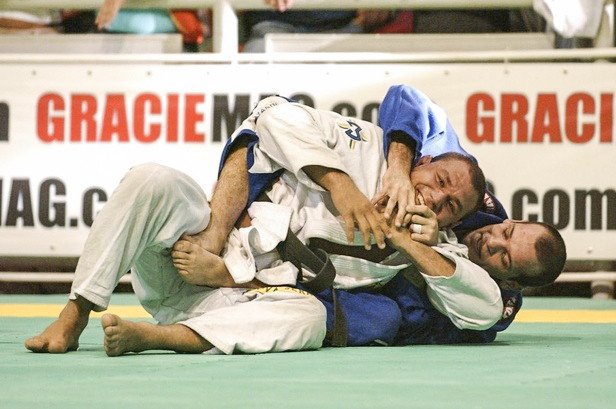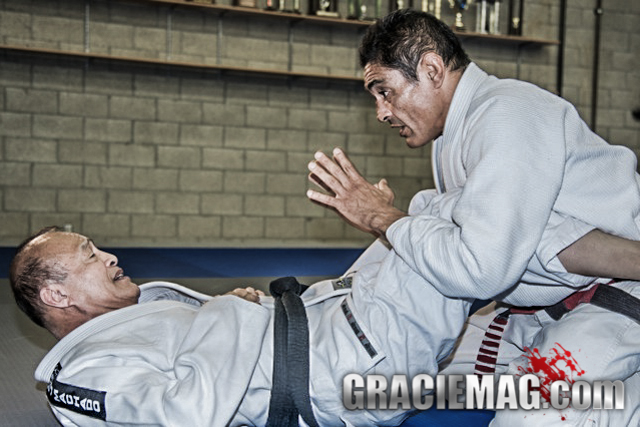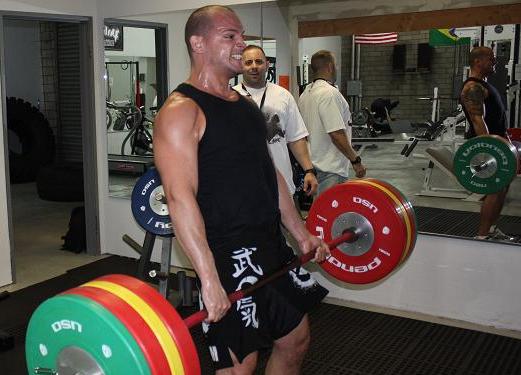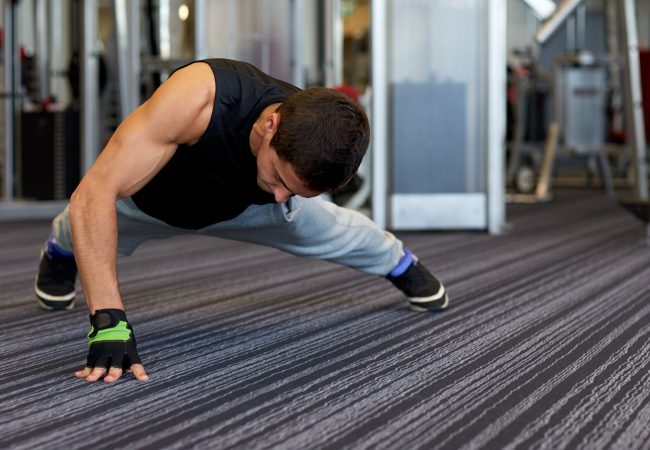
Xande Ribeiro and Roberto Cyborg at the 2006 World Championship. GRACIEMAG
Adapted from an article by Willian von Söhsten, a black-belt under Cícero Costha and BJJ teacher
Lawyers wear suits, doctors wear white coats, and fighters mostly wear gis. But do you know all there is to know about your fighting outfit?
There are many ways to refer to our combat clothes: jiujitsu-gi (‘jiu-jitsu clothes’), keiko-gi (‘combat clothes’), do-gi (‘clothes for the way’) or just gi (‘clothes’).
Enthusiasts of the gentle art practice it for many reasons, but there are many who view it as a profession, whether as a teacher or an athlete. Therefore, it is important to understand some aspects about the gi, mainly to avoid buying one that doesn’t comply with IBJJF rules.
The gi must be made of cotton or a similar fabric, and must be weaved. These days we see many gis with pants and lapels made of ripstop, a material containing nylon threads arranged in squares, and these are also accepted in official competitions.
The gi must be either white, black or royal blue, and some events may demand that fights between black-belts be conducted only with blue or white gis. The collar must be no thicker than 13mm and no wider than 5cm, and the sleeve must be loose by at least 7cm throughout. The jacket must extend to the athlete’s thighs, and the sleeves must be no farther than 5cm from their wrists when their arms are stretched out to the front.
The pants must be no farther than 5cm from the ankle, so no Bermuda shorts allowed. Armed with this information, you are prepared to avoid making a purchase you may regret, like one that can get you disqualified.
It’s also important to know that, ideally, you should wash your gi each time you finish a training session. If you train twice a day, make an effort to keep two gis or more, so that hygiene doesn’t become an issue. After some time, it’s normal to want to acquire more gis, like a collector. Yours truly has a few rare ones and is always looking at what’s new. So here are some tips for keeping your gis clean, with lively colors, and with no damage to fabric resistance.
Obviously, often there isn’t time to wash them by hand, so they end up in the washing machine. What ensures a good machine wash is how much the gi moves in there, so a full machine is not ideal. Tip: when you put your jiujitsu-gi in the machine, always use cold water.
As well as the cold water, always use quality soap and wash the gi inside out. You’ve certainly noticed that the inside of your gi looks less worn out, and that’s not only due to it not rubbing against the mat. Washing the gi inside in will make the color fade in time.
An ancient tradition in BJJ is to wash the gi with some white vinegar as a way to kill the bacteria that produce smell, while not weakening the fabric. Indeed, a solution of 5% vinegar in water is a great, natural, non-toxic antiseptic that helps kill 99% of germs. Pour a half-cup to a cup of this solution in the machine, depending on the number of gis. Vinegar is an acetic acid, and is also recommended for removing residual soap from the fabric, which can harden the gi.
If the smell doesn’t get eliminated, a good option is to add soda to the solution. There are many heavy-duty products on the market today that can clean a gi properly, but the truth is a lot of them are expensive and can damage the fabric. Meaning vinegar and soda remain as perennial favorites of BJJ practitioners.
Finally, a tip for drying your gi. Don’t leave it under direct sunlight. If on one hand the light can exterminate bacteria and dry the fabric faster, on another it can cause discoloration and weaken it. Try to stretch your gi in a dry, airy place, but shielded from the Sun.





